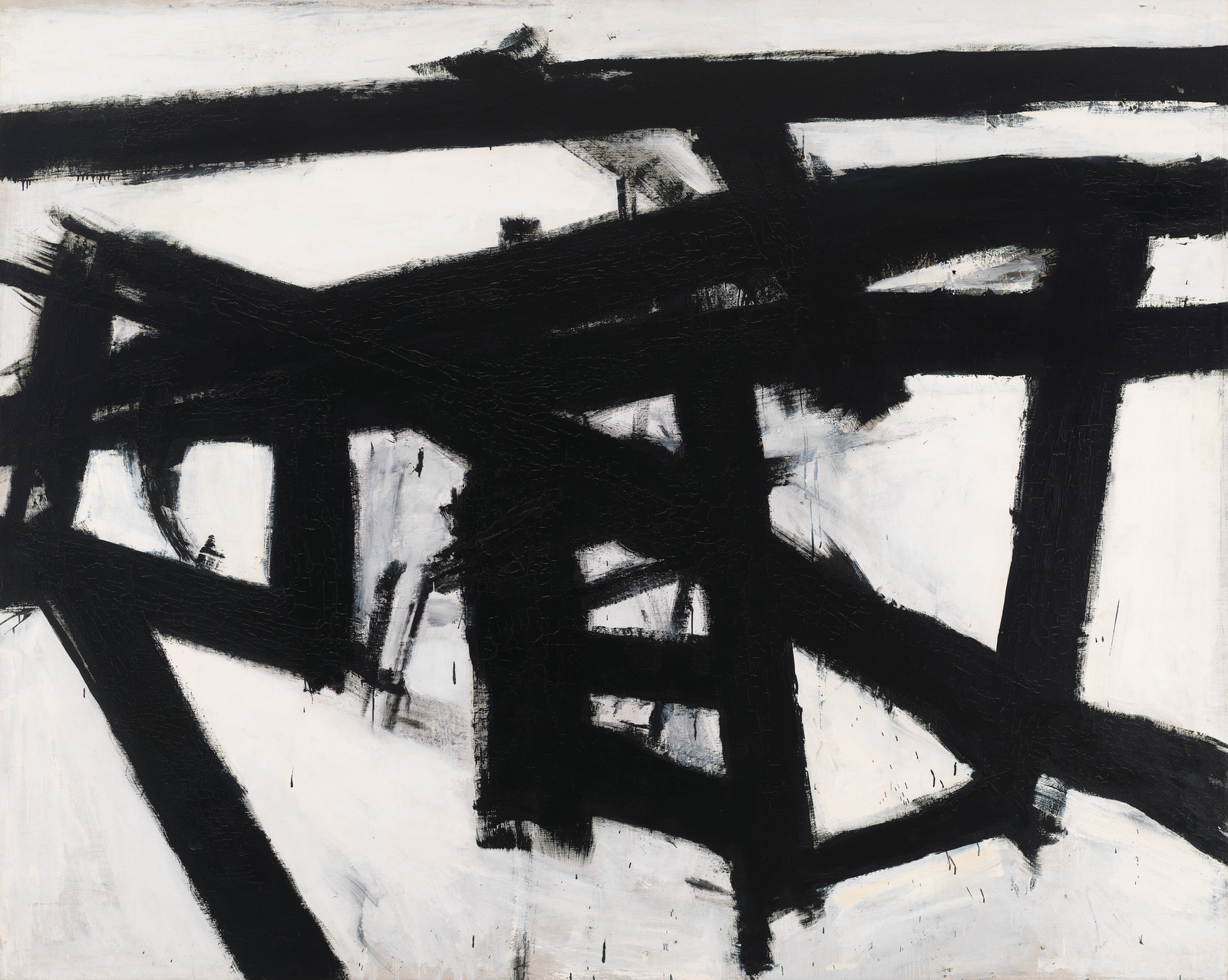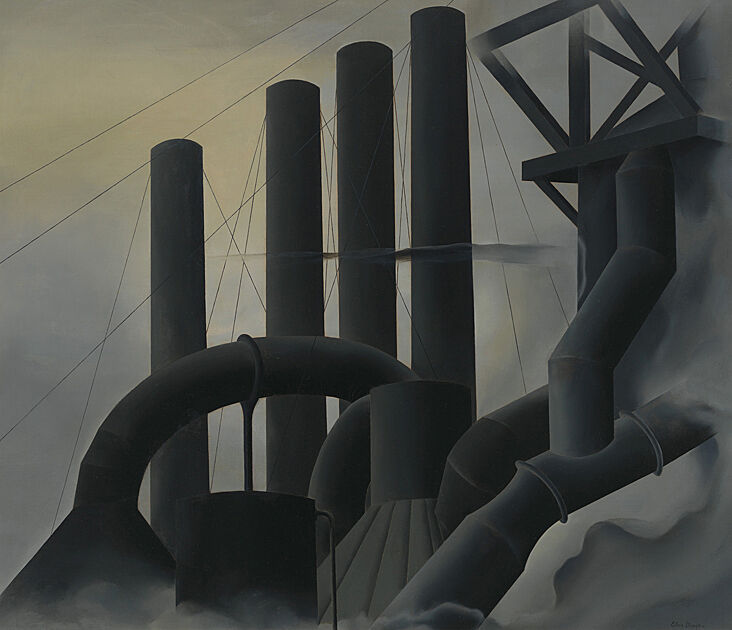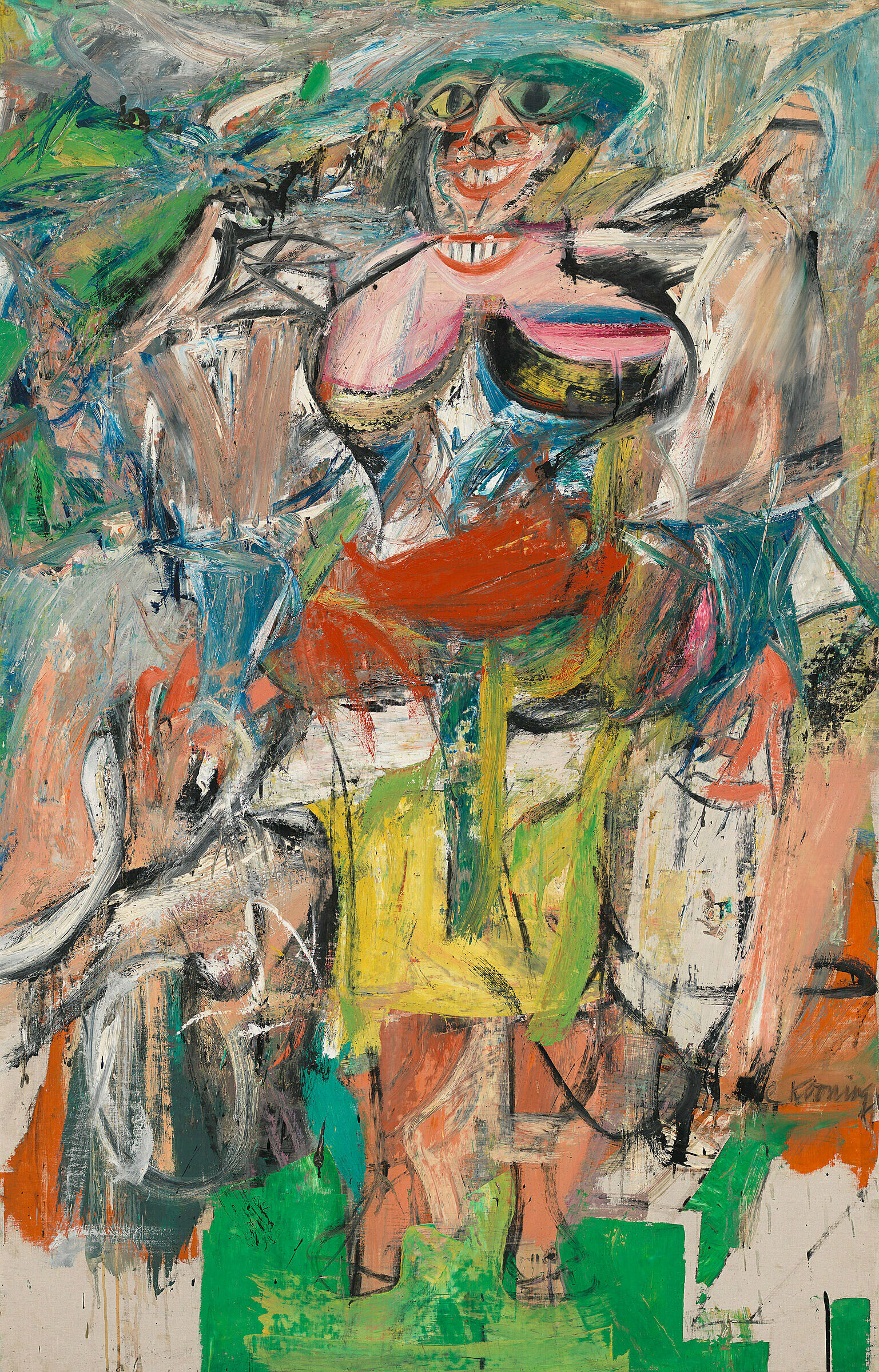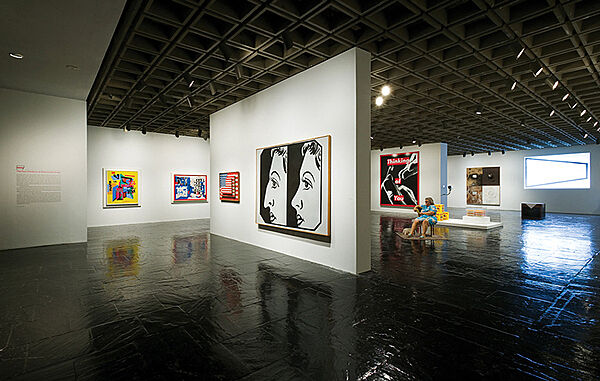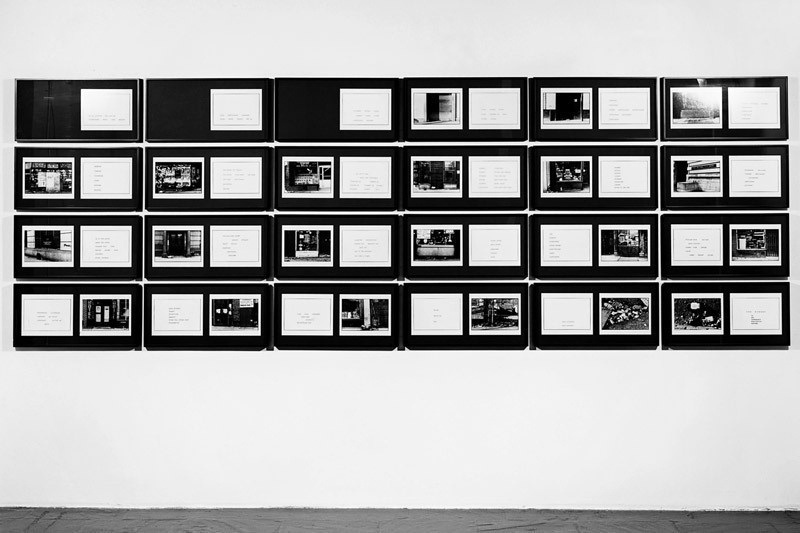Franz Kline
Mahoning
1956
Mahoning, a monumental armature of bold black enamel strokes laid against a white background, seems to be a record of Franz Kline’s spontaneous gestures; its ragged brushwork and slashes of pigment suggest the free movement of the brush across the canvas. Despite this appearance of immediacy, however, the painting—like many of Kline’s abstractions—was deliberately planned. He based it on a small, preliminary drawing made on the page of a telephone book that was projected onto the canvas. Atypically, Kline incorporated collage elements that seem to reference the drawing into Mahoning, affixing sheets of paper to the canvas under layers of black paint. The composition’s strong internal structure plays against the frame of the canvas, with powerful diagonals that seem to break through the edges of the image. Although Kline’s paintings are not meant to represent landscapes, he titled a number of them, including this one, after towns near Wilkes-Barre, in the Pennsylvania coal country of his childhood.
On view
Floor 7
Date
1956
Classification
Paintings
Medium
Oil and paper on canvas
Dimensions
Overall: 80 3/8 × 100 1/2in. (204.2 × 255.3 cm)
Accession number
57.10
Credit line
Whitney Museum of American Art, New York; purchase, with funds from the Friends of the Whitney Museum of American Art
Rights and reproductions
© The Franz Kline Estate/Artists Rights Society (ARS), New York
API
artworks/1997

